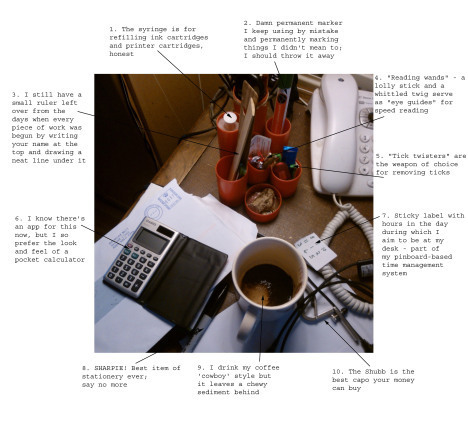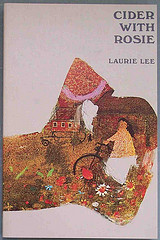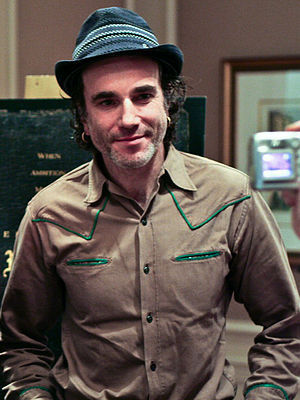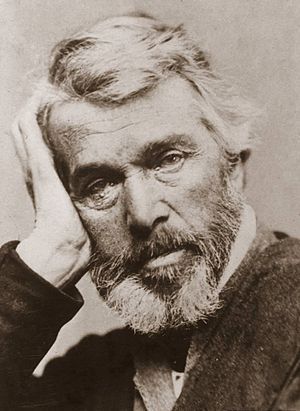Seymour Jacklin's Blog, page 8
March 25, 2013
Ten Things in a Small Corner of my Desk
As someone once said, “Writer’s block is what gets the housework done.”
I suppose that would be true if Twitter and Pinterest didn’t exist.
I often fall prey to the thinking that if I could only rearrange my personal workspace to be more perfect, then I would be more productive. In real life, the most productive phases of my work are more likely to be associated with utter chaos on my desk – like today.
What the picture below does not show are the two other empty coffee cups and the two empty Powerade® bottles, an assortment of neckerchiefs, several books, more sticky labels, an empty wine glass, two egg timers, a letter opener and some pirate stickers. Nevertheless, in the spirit of “Desks of the Rich and Famous: Workspaces of Highly Creative People“, here is a small corner of my universe:
Related articles
Spring Clean Your Cubicle! (thedailymuse.com)
6 Things You’ll Need to Start Working From Home (everydayfamily.com)
Getting the Point Across (the practicality and aesthetics of reading wands)
Freelancing: A Time Management System that Works for Me (an insight into my pin-board technique, if you are interested)
How to make Cowboy Coffee (me explaining how it is done on YouTube)
Freelancing: a Time Management System that Works for Me
Filed under: Miscellanea Tagged: Creativity, Humour, Tools


March 12, 2013
A Dragon at the Core of Literature: 1,500-year-old writing advice from China

Wanglongsi zaoxiang (Via Wikipedia)
Liu Xie (c.470-539 AD) was a literary critic during the Liang Dynasty, a time and place where to become a writer was a matter of a long apprenticeship in courts or monasteries and even bureaucratic documentation was a work of art. His great work “Carving a Dragon at the Core of Literature” captures both the mysticism and asceticism of the writer’s craft in all times and in all places. Although this work is about fifteen thousand years old, I go back to it repeatedly for a fresh vision and, at times, a stern talking to, in the great tradition of far eastern masters.
My translation (by the brilliant Yang Xianyi and Gladys Yang) is in a rare volume of assorted prose and poetry from the Han, Wei and Six Dynasties, published in Beijing by Panda in 1986. I found this book and appropriated it from my parent’s bookshelves a long time ago. It still contains scribbled marginal notes in my 15-year-old’s handwriting – from my Buddhist phase.
The tract as good as opens with these fine words, enough to bring anyone back to the page with fresh expectancy:
“Thoughts shaped in silence can reach a thousand generations to come.”
Liu Xie is a proponent of an immersive, intentional and disciplined approach to writing that involves every level of an author’s being:
“A man should cleanse his heart, purify his spirit, amass knowledge to store up learning, use reason to increase his capabilities, study things carefully to improve his powers of observation, and train himself in the use of the right phrase. Then the mind, pre-eminent, can seek out rhythm to guide the pen and like a skilled craftsman give fitting form to ideas.”
He goes on to give “fancy” its rightful place as “the prime requirement in writing”, assuming that the previous stipulations on spiritual purity and training have been fulfilled, of course:
“When we give rein to our fancy, innumerable paths open up ahead; we plot any course we please, inlay any invisible pattern. Would we climb a mountain? Our spirit soars above it. Survey the ocean? Our ideas reach over the sea. Whatever talents we have seem to race with the wind and the clouds; we take up a pen, inspired beyond all telling, but the work when written may express only half of what was in our hearts. This is because an idea not yet formulated may easily seem striking but it is hard to set down skilfully in so many words. Thoughts pass into ideas, ideas into language, sometimes corresponding so closely that no discrepancy exists, sometimes so loosely that a thousand li stretch between. An argument may be at hand while you seek it at the horizon; an idea may be hard by yet hid from your mind as if by mountains and rivers. So to improve his writing a man should train his mind and not count on simply cudgelling his brains. Once he knows the right way to express himself, no undue exertions are needed.”
Next, he suggests that some thinkers are slow and spend years conceiving, executing and polishing their work, while others are quick and discharge treatises between waking and taking breakfast. Wherever you fall on the spectrum between these extremes, you must embrace it.
I am very thankful to be closer to the fast end: I’m already almost bored with writing this post (in my lunch break). In a few minutes, I’ll hit “publish” without reviewing it, and I’ll move on to the next thing. I’ll probably never produce a great work like Zuo Si who spent a dozen years on his essay on the Three Imperial Cities, but I can live with that.
I get the impression that Liu Xie is telling us that, as long as the work of studying the classics, “delving into changes in style, and understanding the forms of literature” has been done “, we can “give birth to new ideas and fashion striking images” according the speed of our thought, but almost unconsciously.
Learning to write well is like learning to drive skilfully, it becomes a matter of muscle memory and reflex, with long practice and deep immersion in the canon of all ages.
Later in the work, he attacks those who “counterfeit feeling” for the sake of art. He points out that the composers of old folk songs genuinely gave voice to their anguish but that many later poets feigned sentiment for the sake of a dazzling turn of phrase. It’s a timely reminder of the need to write what we know, from the heart. This is absolutely one of my values as a wordsmith; when we tell lies, we do it with words, and yet we also propagate truth, clarity and revelation with words.
There is a sense throughout “Carving a Dragon at the Core of Literature” of the office that writers hold and the service that writers provide to society, and of the seriousness with which this must be taken. This was ever the way in less literate times and places, where even the ability to reproduce and comprehend the shapes of alphabets and pictographies was for an elite. In spite of the great syndication of the scribe’s art that has taken place since Caxton, I think there are still those who are entrusted with the continuation of this special role in relation to how humanity thinks aloud about itself … on paper.
“We cannot meet the men of old face to face, but by reading their works we can see into their hearts … A man of deep understanding and keen observation will have the same pleasure in his mind as a crowd of revellers on the terrace in spring or travellers stopping for good music and food. Just as the orchid, king of fragrant flowers, becomes more fragrant when worn; so books, which are sovereign flowers too, reveal their beauty when studied and analysed. Let men of discrimination ponder this!”
Filed under: Books, Inspiration, Reviews, Writing Tagged: Advice, Arts, Books, Creative Writing, Creativity, Poetry, Reading, Writing


March 11, 2013
Fictional Literary Crushes
One of the highlights of my week is hanging out with the 14-17 year olds in our Church youth group on Sunday evenings. The little glimpses I get into the world of young people today are worth their weight in platinum. For instance, I learned from them that it is entirely unnecessary to tie your shoelaces – you can just tuck the trailing ends into the shoe. I have also had the opportunity to familiarise myself with Harry Potter fan-fiction lingo (do you know for instance, what “headcanon accepted” means?).
This week’s insight bore down on me on the back of a couple of comments, overheard. Here’s a fact: a significant number of teenagers have an agonising, unrequited crush on Mister Darcy. This is definitely headcanon non-accepted stuff but it is real enough to invoke quite strong emotions.
I remember it well.
Yes, before I was old enough to have real girlfriends (and for a while after that, too), I confess I had a few romantic attachments to literary characters - never to more than one at a time, which suggests that these were fairly serious relationships. So this blog post is a tribute to those unreal beauties I loved between the ages of 9 and … er … about 17 if I’m honest!
Arrietty Clock
[image error]
Cover of The Borrowers
(from The Borrowers series by Mary Norton)
Wow, this must have been the first cut; it still smarts to think about it. Arrietty was about 14, brave, redheaded with plaits and freckles. She kept a diary, she was an avid reader. She drove her parents crazy but I admired her adventurous spirit and she wasn’t judgemental about people. We spent hours together. I think it was awfully handy that she was small enough to fit in my pocket and knowing she was there sometimes gave me the chutzpah to scare my own parents by being adventurous – although I think my headcanon made a magical allowance for me to shrink down to her size sometimes too. I actually hit it off quite well with her parents, which was just as well.
I’m not sure how any of these “ended”, or even who came next, but at some point my heart moved on to …
Kira
(From Jim Henson’s “Dark Crystal“)
Although not strictly a “literary” character, Kira deserves a mention. I grew up without television and we went to the cinema about once a year so I never saw the “Dark Crystal”. In fact, I met Kira in 3D, on a set of viewmaster slides (that’s a thing I’ll bet the youth group have never heard of). I fell for her pale complexion, rosy cheeks and elfish ears, and her sense of adventure. I watched the Dark Crystal for the first time a few years ago and was amazed to discover that my gelfling childhood sweetheart also had wings! She kept that a secret. In fact I think there was always a distance in our relationship. As much as I admired and adored her, the gelfling-human thing was never going to work out, and there was always that scruffy “Jen” lurking in the background.
Perhaps I grew up a little at this point and realised I needed to date more human girls. But I couldn’t resist at least a little magic. Perhaps that’s why I gave my heart to …
Dorrie the Witch
(from Dorrie the Little Witch series by Patricia Coombs)
She was a young witch, as vividly illustrated in the books, with a crooked hat and unmatched stockings. It was her endearing clumsiness that won me over. Dorrie and I hit it off because we were both misfits who always ended up doing things differently to everyone else. In fact, she was a proper disaster area! Being with her was so exciting, I never knew what was going to happen next. She always meant well but her spells hardly ever did what they were intended to. In spite of this she always came out on top of the day. I seem to remember she had a spell that made my bicycle fly, and she used to ride on the back of my bike with her cat, Gink. It was flipping romantic (headcanon non-accepted)!
We were pretty inseparable, but we must have grown apart eventually. I suppose, these literary characters never age with us so, at some point we outgrow them and find more age-appropriate sweethearts such as …
Polly
(from “The Dean’s Watch” by Elizabeth Gouge)
Polly was a humble maid who served Mrs Peabody, the wife of Mr Peabody, the watchmaker. I wanted, so very badly, to be Mr Peabody’s apprentice, “Job” and to whittle beautiful birds from scraps of wood to give to her as gifts. I wanted to sit in the pew across from her at church and catch her eye, like he did. I became extremely interested in horology and wood carving, and possibly even in going to church, on the strength of my fascination for Polly. She was brightly optimistic, in spite of Mrs Peabody being pretty harsh (as I recall) and she was simply kind in her thoughts towards those whom others were inclined to mock or ignore. There is no doubt that the time I spent with Polly made me a better person.
The same probably couldn’t be said for …
Rosie
(from “Cider with Rosie” by Laurie Lee)
Yes, well, ahem … This was definitely one of those coming-of-age crushes. I don’t think anyone can read that scene with the cider and the kissing under the hay cart and not fall in love with Rosie. I guess she still haunts my summers, whenever the hedgerows are hot and fragrant and the beech woods are filled with secret green light and the chaff-dust of threshed wheat hangs in the air …
How about you? Did you give your heart away to someone you found in a book? Or is it just me?
Filed under: Books Tagged: Books, Fantasy, Nostalgia, Reading


March 9, 2013
Vegan Mushroom Stroganoff
A wonderful vegetarian alternative to the popular “Beef Stroganoff”, this version goes one better and gets rid of the dairy element to make it suitable for vegans, too.
I finally hit on using coconut milk as a substitute for cream which means I can once again enjoy a dairy-free version of this classic dish. This is a simple and quick dish that should feed about four people and takes less than 30 minutes to prepare.
Image via Wikipedia
Ingredients:
1 tablespoon Olive Oil
1 Large Onion, roughly chopped
400g Mushrooms, sliced
2 tablespoons Flour
2 tablespoons Paprika
1 cup Vegetable Stock
2 tablespoons White Wine Vinegar
4 tablespoons Red Wine
1 tablespoon Vegan Worcester Sauce/Mushroom Ketchup
3/4 cup Coconut Milk
Method:
1. Fry the onions in a large saucepan or wok on a moderate heat until they are limp but not browning.
2. Add the mushrooms and stir for a couple of minutes.
3. Sprinkle the flour and paprika into the mixture and turn several times until they are coating the mushrooms and onions evenly.
4. Add the vinegar, wine and Worcester sauce and stir again to thoroughly coat the ingredients.
5. Keeping on a moderate heat, add the vegetable stock and simmer for about 10 minutes.
6. Pour in the coconut milk and stir, reducing to a low heat and cook gently for a further two minutes.
Serve immediately on a bed of basmati rice or with noodles.
Filed under: Recipes, Vegan Tagged: Cooking, Food, Veganism


February 20, 2013
Fascinating Tangrams

Napoleon Bonaparte – alleged Tangram addict (Wikipedia)
I speculate that the only thing I have in common with Napoleon Bonaparte is a fascination for a Chinese puzzle called the “Tangram“. If I persist with this growing obsession, will I also become a charismatic leader and a brilliant tactician, or will I spiral into eccentric neuroses?
This game was imported from the Orient to Europe in the early 1800s and quickly became a craze across the continent – it was the “Angry Birds” of its time, I suppose. I see no reason to debunk the exotic myths around the origins of the Tangram. When I am manipulating the seven geometric shapes to produce a seemingly infinite array of shapes and figures, the feeling that I’m dabbling in an ancient secret like the i-Ching is a big part of the thrill. I am ever expectant that cracking some combination of shapes will unlock another dimension of geometric reality. Perhaps this explains why tipping the black tiles out onto a table or looking at a new problem gives me the same feeling of comfortable anticipation that I used to get from pulling a cigarette out of a packet.
To “play” the Tangram (literally known as the “seven boards of wisdom” in Chinese), you need a set of seven flat puzzle pieces that are cut from a square. They consist of five right-angled isosceles triangles (two large, two small and one medium) a trapezoid and a square. The “problems” to be solved come in the form of silhouetted shapes that the player must form using all the pieces. It is often more difficult than it looks. It becomes slightly easier after about the 100th puzzle has been solved, once the player has a feel for the ways in which the shapes can combine. However, it is still fiendishly challenging at times and there are “advanced” levels of problems that require no further upgrades, subscriptions or downloads – just the same seven pieces.
It is the very simplicity of these seven basic shapes and the infinite complexity of the shapes they can create by recombination that first appealed to me and drew me in.

Asymmetrical Symmetry (Wikipedia)
As the infection of Tangramicitis spread through my neurons, I found it particularly satisfying that the conflict between my two inner aesthetes (the recalcitrant one that loves symmetry and the boisterous one that loves asymmetry) was amicably settled. Even completing a symmetrical outline with the shapes requires that they be placed asymmetrically in relation to each other – and this is where the mind needs to scuttle sideways and look for the less obvious answer.
Outlines of symmetrical shapes, that have asymmetrical solutions are just one of the types of Tangram problem, however. Two other types of problem have their own appeal.

I wouldn’t mess with this goose.
Firstly, the pieces can be combined to make the outlines of birds, animals, characters in various poses, faces in profile, household objects, boats, buildings … virtually anything. Sometimes the sense of character or dynamic movement that these outlines seem to have is surprising and particularly delightful.
Secondly, the intermediate player can tackle puzzles known as “paradoxes”. These are pairs or series of outlines that appear to have extra parts or bits missing or otherwise seem to have a larger or smaller surface area, in spite of being made using the same seven shapes.
The Tangram has, not surprisingly, influenced architecture, furniture design, graphics and mathematics and I feel there is mysterious potential here for the writer in me, too – if only I could get to the nub of it. One of the many stories about the origins of the game tells of a man long ago called Tan who was carrying a beautiful ceramic tile as a gift to his emperor. According to the story, he tripped and dropped the tile, and it smashed into seven pieces. His dismay turned to joy as he picked them up and saw that they could be used to make beautiful shapes of birds in flight. Other creation myths suggest a connection between the Tangram and ancient Egypt. Maybe it was a gift from our ancient alien ancestors? Who knows …

Two Figure Tangram (Steven W)
Now, if you’ll excuse me, I have an appointment with a broken tile and have promised myself that I may solve one more problem before lights out.
Related articles
Tangram Pop-Up (stylebubble.co.uk)
Tangrams.ca (my fave go-to site for all things Tangram)
Filed under: Art, Inspiration, Miscellanea Tagged: Arts, Creativity, Tangram


January 11, 2013
The Next Big Thing: My Work In Progress?
So Gillian over at skybluepinkish tagged me in a desperate bid to get me to blog something.
Thank you, Gillian, you have done me a favour!
This tag is part of a global blogfest encouraging writers to let everyone in to their current work in progress. I’m not sure mine is “the next big thing” but I would like to have it done by the end of this year.
Cue the tape … here goes:
What is the working title of your book?
It’s called “The Coat and Ring”, which, in the great tradition of Grimm’s fairy tales, does what it says on the tin – a coat and a ring being major players in the life of the protagonist. Theologians may notice a tenuous reference to the return of the prodigal son in the title, too:
“Bring the best robe and put it on him. Put a ring on his finger and sandals on his feet.”
This wouldn’t be entirely coincidental.
Where did the idea for your book come from?
The whole thing was mapped out in essence in a dream I had while resting on my bed one afternoon about six years ago. I often take a nap in the afternoon and this is a good time for dreaming. Soon after that I used it as a tale to tell friends on long walks. When I came to writing it down (intending a short story) it sort of grew beyond control.
What genre does your book fall under?
Romantic Faerie Phantasy (not romance, fairy or fantasy)
Which actors would you choose to play characters in a movie rendition?
The protagonist is told from the first person. He’s in his 20s and grappling with the transition into adulthood. He’s just a kid, really, who finds himself boxing way above his weight. His origins are a bit mysterious. He needs blue eyes. He is James Mcavoy!

Photo by gdcgraphics via flickr
Then there’s the avuncular “Terrence”, an epicurian patriarch who presides over a year-long banquet in his mansions, which are built over an oasis. He is Donald Sutherland.
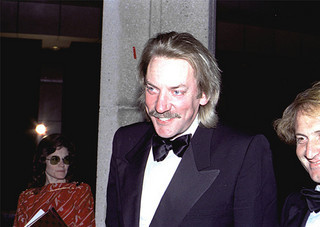
Photo by Alan Light
There’s a merchant turned adventurer called Selwyn.
“His eyes were set deep in a wrinkled, nut-brown face, glowing out at me with a couple of pinpoints of reflected light that nevertheless seemed to come from inside him. The edges of his ragged moustache concealed the corners of his mouth which, by the laughter in his eyes, must have been turned up in a friendly grin – although it was difficult to be sure. Like a man who has been in the sun all day and who through the night gives off the radiance of what he has absorbed, I felt a strong glow from him. It was impossible to tell his age for his skin was well weathered by the elements rather than age and he gave off an air of rude health”.
I’m thinking … Daniel Day Lewis.
Finally there’s the girl. She’s descended from a family that made its living from the sea and she is rumoured to have a dash of mermaid blood in her veins. I need someone suitably ethereal, oddly otherworldly. This was tricky but I’m casting Lily Cole:

Photo Credit GabboT via flickr
Next question …
What is the one sentence synopsis of your book?
An inheritance was a blessing, and then a curse, and a blessing once again.
Will your book be self-published or represented by an agency?
For me the arguments weigh in favour of going the indy route.
How long did it take you to write the first draft of your manuscript?
I’m a year in but I don’t think I could call it a first draft just yet.
What other books would you compare this story to within your genre?
It is strongly influenced by George MacDonald and falls somewhere between The Phantastes and Donal Grant. I also would place it on the shelf alongside some of Paul Gallico‘s wonderful tales like The Man Who Was Magic and The Snow Goose. There’s also a touch of Antoine de Saint-Exupéry and The Little Prince about it. I guess them’s my influences.
Who or what inspired you to write this book (story)?
The authors mentioned above but probably George MacDonald more than anyone else. I spent the best part of 2010 immersed in his work and still feel as if I have only just scratched the surface. He had a comprehensive understanding of the thin veil between our waking reality and the mythopeic unseen that is mediated through our imaginations.
The story has also become a receptacle for a lot of observations and thoughts garnered from my surroundings while I have been out walking the dog so it boils down to GM and my dog, really.
What else about your book might pique the reader’s interest?
If you have ever felt like a doormat, become resentful that others have taken advantage of your generosity and grown fat upon your labours, then this story is for you. If you have gone through life burdened by the magnificence of your family’s good name or the perceived expectations of your parents and forbears then this story is also for you. If you long to throw everything to the wind and start afresh, then it is for you, too. If you have a colourful imagination and can let yourself go into a strange world, then you’ll be ready to read “The Coat and Ring” – just as soon as I finish writing it 
….
_
Filed under: Blogging, Books, Inspiration, Writing Tagged: Books, Creative Writing, Creativity, Fiction, Writing


January 7, 2013
The Wisdom of Things Found 4: The Eraser
January 2013, next to the river Derwent (Durham)
It has been a while since I listened to the message of a found object, let alone blogged about it, but this one nailed things on so many levels that it has brought me out of hibernation.
The river Derwent has burst its bank a few times in the last few damp months, destroying low-lying vegetation, pulling rotten trees up like spent teeth and retreating into newly worn watercourses, leaving a new geography of sand and silt and folorn scraps of debris in the lower branches of trees. The scouring effect of the flood always unearths another layer of history, old colliery bricks and pipes and pottery – rich pickings for the found object philosopher.
 This caught my eye, looking like a rectangular pebble. In fact it is a very old and hard eraser. As soon as I held it in my hand it spoke:
This caught my eye, looking like a rectangular pebble. In fact it is a very old and hard eraser. As soon as I held it in my hand it spoke:
THE OLD STORY CAN BE RUBBED OUT AND A NEW ONE WRITTEN IN ITS PLACE …
Well, dear reader, I don’t know if those words are as sweet to you as they were and are to me. The last two months of silence on this blog has been due to things being tough. I’d dearly like to rub them out and write something else there. I pray I’ll have the objectivity to blog about this shortly, but in the meantime there are such gracious comforts as this eraser spoke to me.
Later that evening, I took out my find for another look, and that was when I noticed the face.
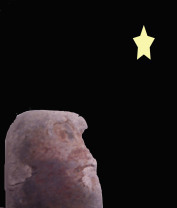 Just from a certain angle it looks like a wise old bearded man (who reminds me a little of my father) with his gaze turned towards the heavens … to the light of a Star, perhaps?
Just from a certain angle it looks like a wise old bearded man (who reminds me a little of my father) with his gaze turned towards the heavens … to the light of a Star, perhaps?
After all, it was the 6th of January, the night of Epiphany …
Click here for more “Things Found” posts or listen to the Story of “The Wisdom of Things Found” at Stories from the Borders of Sleep.
Filed under: Inspiration, Things Found Tagged: Spirituality, Wisdom


September 18, 2012
One Big Story … Part I
This month, I have the joy of working with 300 year five and six pupils from Durham City schools to turn their ideas into One Big Story: an epic and imaginative tale that will be published in paperback in October.

Scary? No, this is just my storytelling face (Photo: Robyn Trainer 2012)
This one of the most exciting things I have done for a while; it ticks about a hundred boxes for the things I love doing: creative writing, stimulating other people’s imaginations and helping them to realise their creative ideas, being able to say the magical word “story” about 50 times a day and share my passion for the written word.
I’m working as part of a team alongside Christina Maiden (Off The Page Drama) and Robyn Trainer (Floral Footsteps), running whole day workshops in primary schools, getting children to invent and develop ideas for stories and working collaboratively to forge them into a coherent narrative.
Remarkably, it turns out to be quite possible to take the ideas of 30-40 children at a time and guide them into creating a story together as long as you think on your feet and prepare yourself for almost anything to happen. Not to give too much away, but we are half way through the project already and have five out of ten chapters mapped out. The children have taken us beyond our own imaginations into their own world where there are a lot of fights involving food and an awful lot of ghoulish characters in which the malevolent and comedic are theatrically blended.
It has been very encouraging to see that literacy is alive and kicking in every school we have visited so far; I’m the one getting educated.
In less than a month, we will be holding the book in our hands and you, too, will be able to read what happens when children create the sort of story that they would like to read … watch this space …
Filed under: Books, Writing Tagged: Arts, Books, Community, Creative Writing, Creativity, Durham, Fiction, Local, Publishing, Reading, Writing


September 4, 2012
A Doodle a Day: Part VII
In lieu of a written blog post, here are a few more doodles that bubbled up from my brain in the last month.
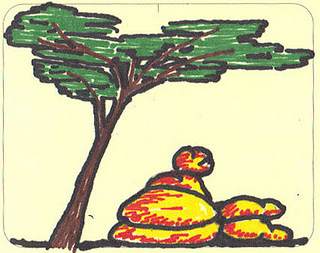
Zimbabwe … I miss these rocks and trees very much.
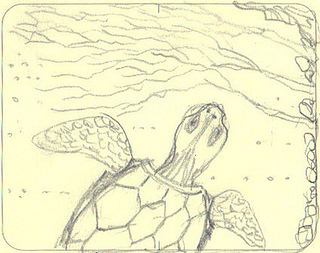
Deep
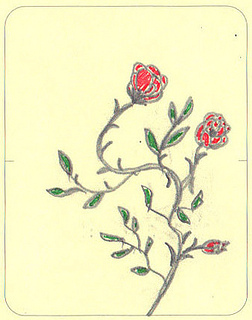
Sweet
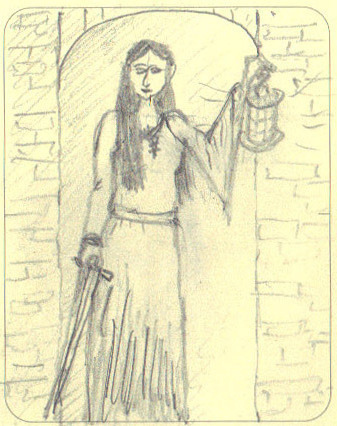
Operatic Scene
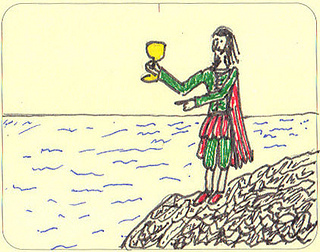
Cup and Ocean
Other posts in the “Doodle a Day” series:
Part I
Part II
Part III
Part IV
Part V
Part VI
Filed under: Art, Miscellanea Tagged: Creativity, Doodle, Journaling


August 16, 2012
Going Public with Thomas Carlyle: “Know Thy Work”
I like Thomas Carlyle (1795-1881). He’s one of my rugged 19th Century romantic existentialist individualists. I don’t buy the whole package of his thought (women never seem to get a mention, for instance), but he can be forgiven for being a man of his time as much as I will need to be if any of my thoughts survive me.
Apart from anything else, Carlyle wrote 21 volumes of the history of Freidrich II of Prussia; and he didn’t even have the Internet! This suggests that he had one thing nailed: he knew how to knuckle down and get on with his work – probably because he didn’t have the Internet.
So, as my contribution this week to the #GoingPublic audio project, here is an excerpt from Book III of Carlyle’s “Past and Present” that gives us a clue about the root of his productivity, his attitude to work. It amuses me, the way he dismisses “Know Thyself” with a disdainful sweep of his hand and then goes on to expound “Know Thy Work” with increasingly dizzy conceits. But I also find it invigorating. How about you?
The full text is available here.
Check out a wealth of other great audio clips from the Going Public Project.
Filed under: #GoingPublic, Books, Inspiration Tagged: Advice, Books, Creativity, Reading, Spirituality, Time management



